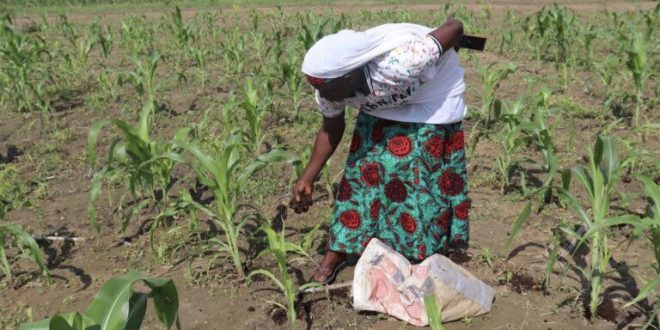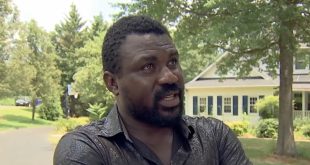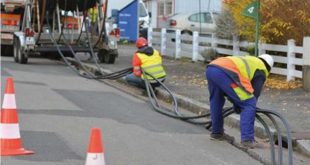GAROUA, Cameroon – Mongabay — Ouro Andre, a village in the Lagdo sub division in the North Region of Cameroon, appears desolate on this rainy morning as farmers set out early to till the soil and plant crops. Goats munch fresh grass, bellowing to break the quiet in this 700-person village sandwiched between hunting interest zones (prohibited areas) 7 and 14.
The people of Ouro Andre own patches of land on the fringes of Bénoué National Park, cultivating corn, maize, cotton, sorghum and millet and raising goats and sheep. One of these famers, 48-year-old Pierre Adamou, father of five, sets out for his farm, 5 kilometers (3 miles) away, with a machete in one hand, a sack of maize in the other and a massive hat pulled tightly over his chin to protect himself from the sun’s direct rays. It is the rainy season, and after preparing the field for two weeks early in May, it is time to plant corn. But Adamou is also doing something a little differently.
He’s using the Zai technique to restore his soils. Zai, also known as tassa, is a traditional technique imported from West Africa to restore degraded soils leading to farmers struggling with low harvests. The technique consists of digging holes 70-80 centimeters (27-31 inches) apart, 20 cm (8 in) deep and 25 cm (10 in) wide to allow compost, grain and rainwater to mix in the same hole and prevent erosion on slopes, Bonne Gissata, a project lead with Forests and Rural Development…This article was originally published on Mongabay
 CameroonOnline.org Cameroon news, Actualité Camerounaise, live Web TV & Radio, World News and a lot more
CameroonOnline.org Cameroon news, Actualité Camerounaise, live Web TV & Radio, World News and a lot more




